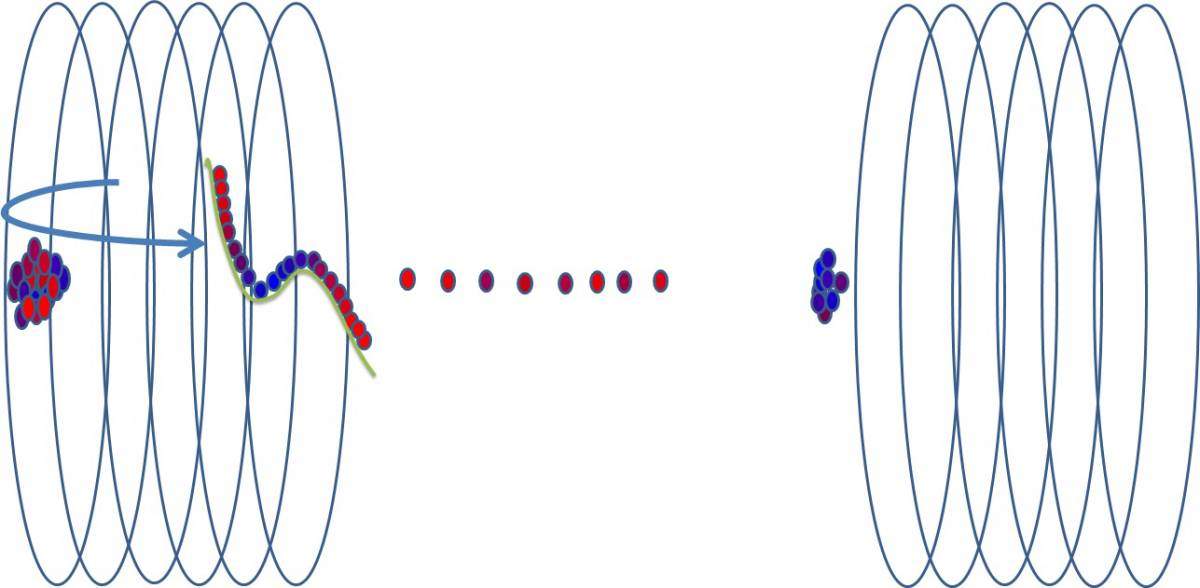Are you a journalist? Please sign up here for our press releases
Subscribe to our monthly newsletter:

When investigating atoms, scientists face a challenge: At room temperature, individual atoms in a gas have kinetic energy, and fly around at large velocities. Temperature is, in essence, the relative movement between atoms; thus the goal of getting the atoms to have small relative velocities involves freezing them to extremely cold temperatures. A group at the Weizmann Institute of Science has now developed new universal method for cooling ions.
Ions, atoms with electric charges, are cooled today in traps using electric and magnetic fields and then further cooled with lasers. The new method, developed by Staff Scientists Dr. Oded Heber and Dr. Michael Rappaport, and postdoctoral fellows Dr. Reetesh Kumar Gangwar and Dr. Koushik Saha, in the lab of Prof. Daniel Zajfman of the Particle Physics and Astrophysics Department of the Weizmann Institute of Science, does not require lasers.
In the past, Prof. Zajfman and his group had created an improved version of an ion trap called an electrostatic ion beam trap – an apparatus for storing ions that was much smaller than the standard ion storage rings, which tend to be very large and expensive. In an electrostatic trap, ionic molecules oscillate as they fly at speeds up to 10,000 km/h – and these cool down internally within the trap. Systems like this can recreate in the lab the sparse matter that exists in interstellar space.
When groups of ions are oscillating in the trap at these high speeds, there is a natural distribution of frequencies. At this stage, the scientists have a method in which “variable periodic impulse voltage” is applied to separate out the coldest ions in that distribution, accelerating only these. By continuing to apply voltages, researchers can eventually end up with the very coldest ions. “This process,” says Heber, “is not so much cooling as ‘filtering’ or sorting ions according to the temperatures they have reached.”
In a series of experiments, ions reached temperatures of about a tenth of a degree above absolute zero
In recent experiments, however, the group tuned the trap so the density of the ions in the electrostatic ion beam trap can be increased 1,000-fold at the edges. Increasing the density naturally increases the incidence of collisions between the ions in the beam, and the result is that energy gets shared between the ions. The scientists discovered that there was an enhanced correlation between the position of an ion within the group and its kinetic energy level. The coldest ions were in the center. Indeed, the energy – or temperature – was transferred to the ions at the edges, producing more extremely cold ions in the accelerated bunch. “This surprising process,” says Heber, “already passes the test of genuine cooling.”
In a paper recently published in Physical Review Letters, the group describes a series of experiments in which ions reached temperatures of about a tenth of a degree above absolute zero. The researchers are currently conducting further experiments to fine tune the system and get the ion temperatures even lower.
Heber says that the new method is significant because the cooling process does not depend on either the type or the weight of the ion. Thus it might be used, for example, to investigate the properties of large biological molecules or nanoparticles.
Prof. Daniel Zajfman’s research is supported by the Comisaroff Family Trust. Prof. Zajfman is the incumbent of the Simon Weinstock Professorial Chair in Astrophysics.